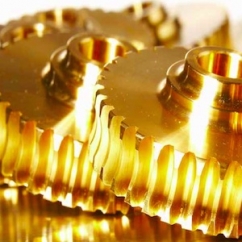Articles and News
Downward Spiral Slows For Gold March 30, 2016 (0 comments)

New York, NY—Gold prices continued to slide in 2015, albeit at a slower pace than in 2014, as investors sought equities, real estate, and other investments instead of gold and commodities.
Commodities research and consulting firm CPM predicted in late 2010 that the bull market for gold and commodities prices would peak in 2011, then decline for three to five years before turning upward again. Indeed, gold and commodities prices have been declining since late 2011, more than four years ago. CPM’s current analysis, outlined in detail within its 227-page annual Gold Yearbook 2016, stands by its earlier prediction of a three- to five-year slide.
CPM says the fundamentals of gold and commodities—and the economic, political, and financial market environments that have been favorable for other investments in recent years—are turning more supportive of gold investments, which in turn would signal a rise in the price of gold.
The U.S. and world economy may not slide into a recession or run into major problems in 2016, but there are problems emerging on the horizon that do bear watching. At any point one or more issues—such as central bank gold demand, especially in China—could become critical enough to global and national growth that they would spur investor demand for gold, at which time prices would be expected to rise.
CPM’s Gold Yearbook 2016 addresses the evolution of these fundamentals over the past few years and the impact these fundamentals are expected to have on the price of gold over the course of 2016.
Mine supply grew in 2015 and is forecast to continue rising in 2016. The increase in mine supply was offset by a decline in scrap supply, which pushed total supply lower during the year. Total supply is forecast to rise in 2016 as the increase in mine supply overshadows the decline in secondary supply.
Fabrication demand has been the largest beneficiary of the relatively weaker gold prices over the past few years. Gold fabrication demand rose to 96.7 million ounces in 2015, the highest level of gold use in jewelry, electronics, and other fabricated products since 2007. Fabrication demand is forecast to continue rising during 2016, albeit at a slower pace than in 2015.







